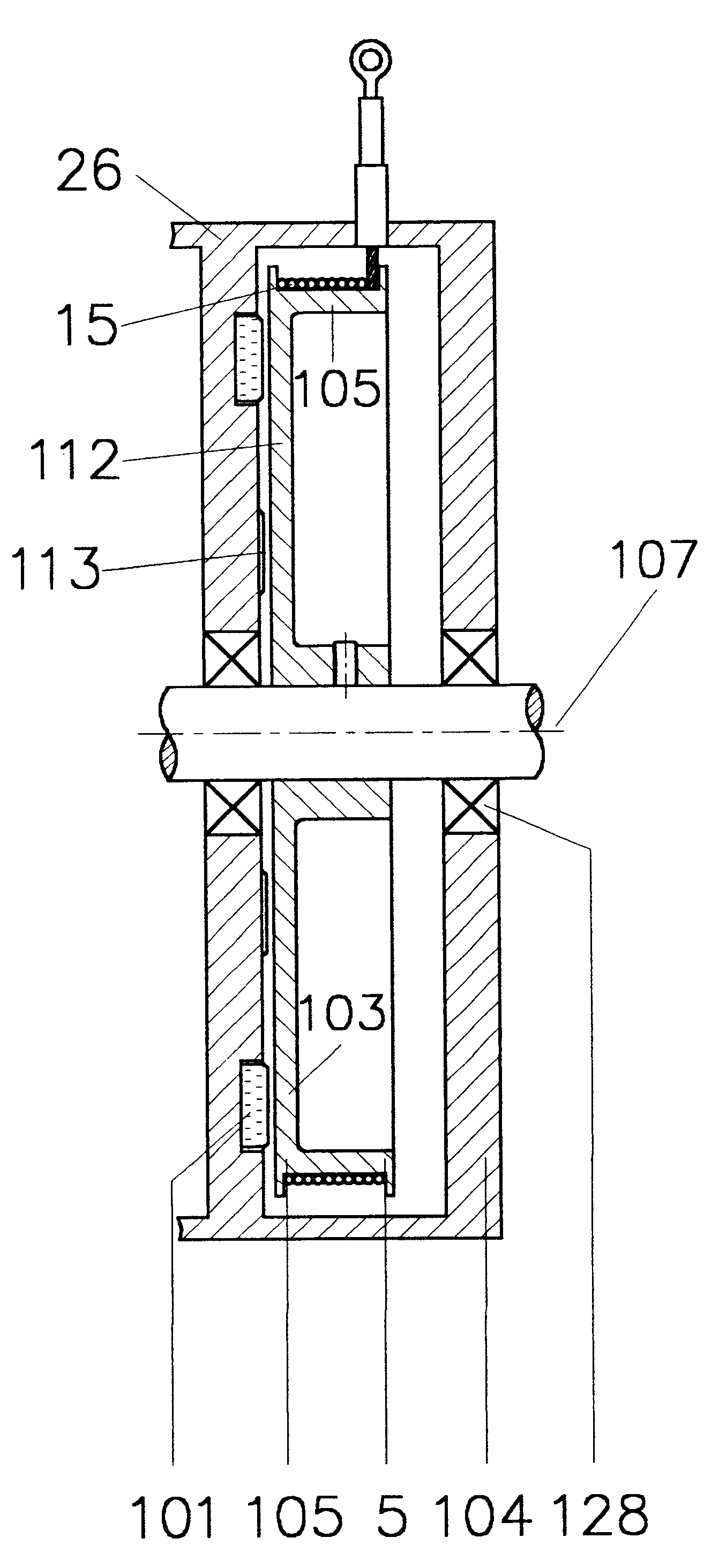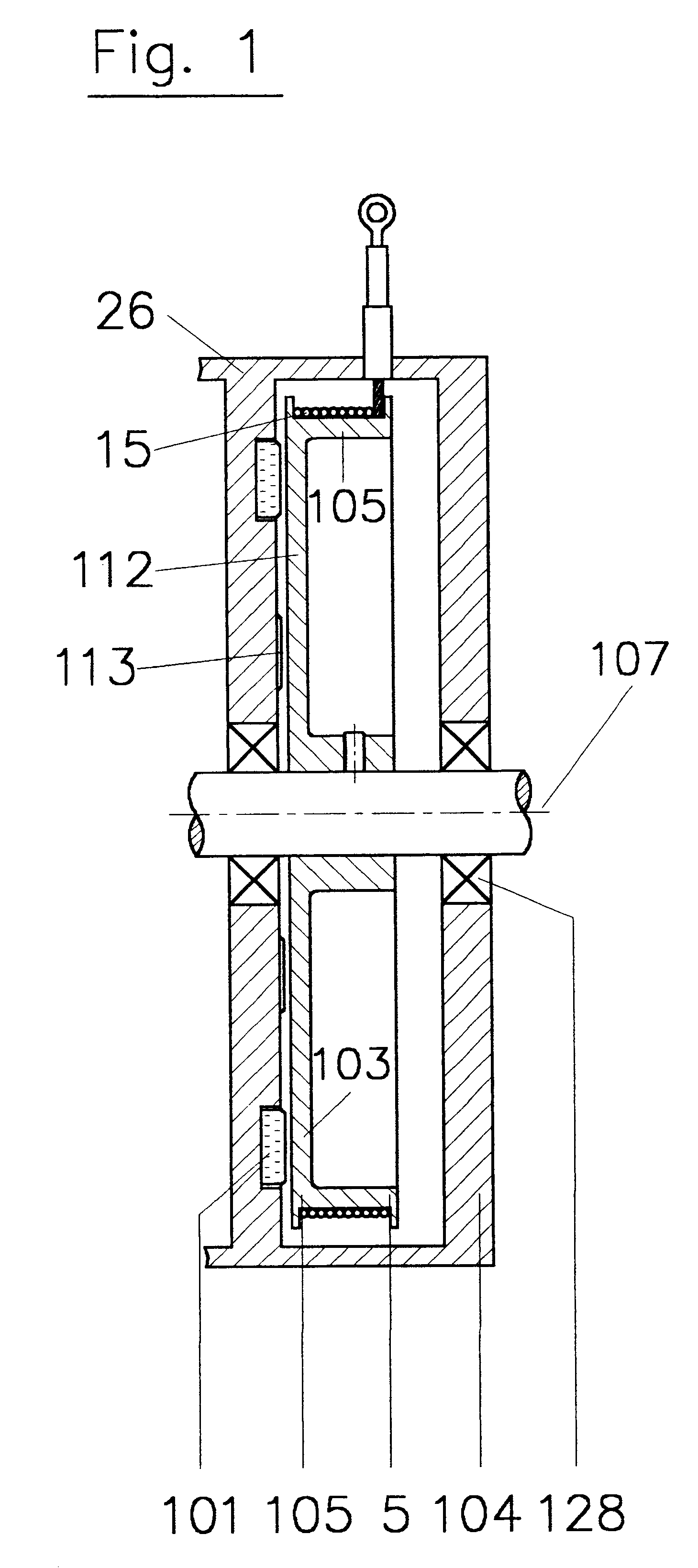Measuring cable travel sensor
a technology of cable travel and travel sensor, which is applied in the direction of measuring wheels, instruments, elevators, etc., can solve the problems of falsification of measurement, additional difficulty, and suffers of cable travel sensors of this kind
- Summary
- Abstract
- Description
- Claims
- Application Information
AI Technical Summary
Benefits of technology
Problems solved by technology
Method used
Image
Examples
Embodiment Construction
Reference will now be made generally to FIGS. 1 and 2 which each show a respective embodiment of a measuring cable travel sensor according to the invention, comprising a rotatable cable drum 5 which is suitably fixed on a rotatable shaft and which can thus rotate about an axis of rotation as indicated at 107 in FIGS. 1 and 2. For that purpose the rotatable shaft is supported by means of bearings 128 in a housing which in the illustrated structure comprises a generally box-shaped, preferably closed profile member 26.
The cable drum 5 comprises a winding cylinder 105 with an external peripheral winding surface 106 which thus forms the external periphery of the winding cylinder 105. The winding cylinder 105 has radially outwardly facing abutments at each of the two ends thereof for limiting the arrangement of a measuring cable 15 which is to be wound on the winding surface 106. The winding cylinder 105 joins to the hub region of the winding drum 5 in a single step by way of individual s...
PUM
 Login to View More
Login to View More Abstract
Description
Claims
Application Information
 Login to View More
Login to View More - R&D
- Intellectual Property
- Life Sciences
- Materials
- Tech Scout
- Unparalleled Data Quality
- Higher Quality Content
- 60% Fewer Hallucinations
Browse by: Latest US Patents, China's latest patents, Technical Efficacy Thesaurus, Application Domain, Technology Topic, Popular Technical Reports.
© 2025 PatSnap. All rights reserved.Legal|Privacy policy|Modern Slavery Act Transparency Statement|Sitemap|About US| Contact US: help@patsnap.com



